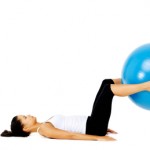
On returning home from a recent Pilates class I wondered to myself as to what effect, if any, the exercises had on my movement and posture. I reflected also on the fact that nearly every exercise class that I had been to recently seemed to emphasise the importance of having a good ‘core’. Physiotherapists are often quite keen when treating people with low back pain to try to modify their ingrained movement patterns; but can these patterns be altered, and does this result in any change in pain and activity limitation? These were the questions that were posed in a systematic review by Laird et al in the online open access BMC Musculoskeletal Disorders journal.
Here’s what they did
Eight databases were searched until January 2012. The authors sought randomised controlled trials or controlled clinical trials of people with low back pain with interventions that were designed to influence muscle activity patterns, lumbo-pelvic patterns, or postural patterns. They looked in particular at the effect of the interventions such as trunk stabilisation or core stabilising exercises on lumbo-pelvic movement. Studies were quality assessed using the PEDro scale.
Here’s what they found
The search identified 9,288 potentially relevant articles and 24 other articles were identified through other sources. Following screening of title and abstract, 47 full text articles were retrieved; however, only 12 trials (25% of retrieved studies) met the inclusion criteria.
The authors concluded

Little consistent relationship exists between changes to pain
and/or activity level and changes to muscle activity.
“The available evidence on muscle activity pattern changes following movement-based interventions indicates little difference in outcomes between a general exercise programme and specific interventions that aim to change the activity of trunk muscles such as Transversus Abdominus and Lumbar Multifidus. A relationship between changes in movement patterns and improvement in pain or activity limitation was also infrequently observed.“
The Musculoskeletal Elf’s view

It appears at this point in time that our ability to change movement patterns with specific interventions is not well supported by the research currently available. A key challenge presented by the authors was that clinicians and researchers need to consider carefully how movement patterns can be reliably measured, and how changes in how people move are associated with other health indicators such as activity limitation and quality of life.
In what ways do you measure a patient’s movement patterns? How reliable do you feel that your current measurement methods are? What quality of life measure(s) do you use currently?
Send us your views on this blog and become part of the ever expanding Musculoskeletal Elf community.
Links
- Laird, R.A., Kent, P., Keating, J.L. Modifying patterns of movement in people with low back pain – does it help? A systematic review, BMC Musculoskeletal Disorders 2012, 13:169 doi:10.1186/1471-2474-13-169
- Physiotherapy Evidence Database (PEDro) http://www.pedro.org.au/ [accessed 13th September 2012]

Hi again, just thought I’d post a comment about this blog, I’ll try and keep it brief :-)
I am of the opinion that ‘core stability’ is very important with regard to low back pain & sciatica. This is because a lot of pain results from continuous and repetitive movements outside of a ‘neutral spine’. However, I can relate to the findings of this article as my opinion is that, as a health professionals (Physiotherapists) and any other health professionals that may use core stability as a treatment tool, we can be guilty of paying too little attention to the individuals’ core/posture outside of the treatment cubicle or exercise programme.
We have our back as part of our body 24 hours a day, 7 days a week (that is a total of 168 hours), therefore it needs looking after for the same amount of time. Let us say that an individual spends 30 minutes a day exercising, 5 times a week (a fair and maybe even generous assumption), this equates to 2 hours and 30 minutes of looking after their ‘core’ within a time period of 168 hours… just under 1.5%! By the way, I deliberately use the full 168 hours, as sleeping in a position which is not favourable to someone’s low back pain or sciatica will at best slow down the healing process and at worst increase the level of pain being suffered.
Therefore, if a core stability exercise programme has been prescribed, yet no consideration has been given to what that individual’s posture is like outside of the exercise class/programme, then its effect is likely to be limited. However, if a truly holistic approach is made, the results I am confident would be more positive.
Finally, and I am holding myself up here to be shot at and called old fashioned, but the main measurement method I use for my patients movement and posture is with my eyes (not very objective I admit, but a measuring tool not to be taken lightly) and the quality of life measure I use is talking and listening to my patients (not just hearing them).Once again I confess this is not very objective, but invaluable if you are to build a good rapport, understanding and empathy with them, vital when treating any patient and in particular those suffering with low back pain or sciatica which may be having a significant impact on their quality of life.
I am probably being a bit flippant with my response and appreciate and understand that this would not hold up very well to research scrutiny, but from a practical point of view I believe it works very well. It is very difficult (nigh on impossible?) to obtain good reliable measurements of someone’s posture and movements. As I alluded to above, it would need to be a tool which was worn 24/7, as plenty of false positives would be gained if it were restricted to just a few minutes/hours a week while being assessed.
I hold a similar view with regard to the impact low back pain or sciatica may be having on someone’s quality of life. It is all well and good providing them with a questionnaire to fill in, but it is very formal and quite ‘cold’. Over the years, I have had many patients open up and elaborate much more on how they are feeling emotionally once I have gained their trust and respect, something which would have been difficult to achieve simply by providing them with a pen and paper and asking them to complete a questionnaire.
Once again, I understand that research is vital and needs to be as objective as possible, but it is a shame sometimes when research can gain all of the headlines yet in reality it does not have a true reflection on the real world.
I hope I have not offended at all and a little bit of controversy may well provoke some dialogue, which can only be good :-)
Keep up the good work and I look forward to reading your blogs.
Kind regards,
Paul.